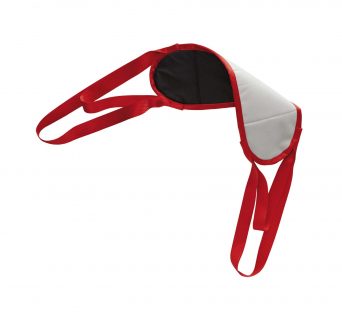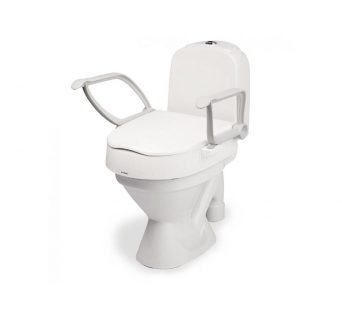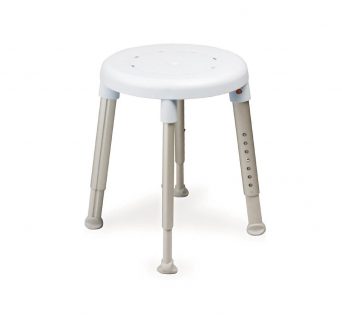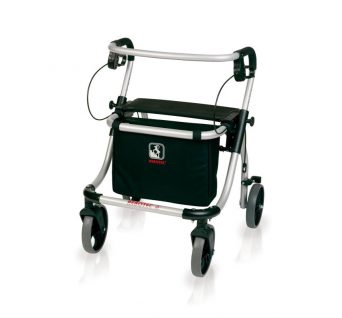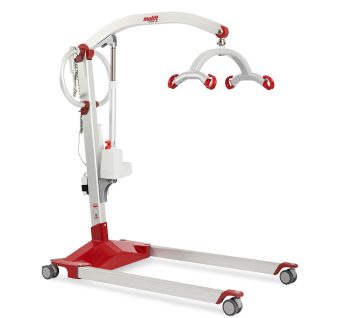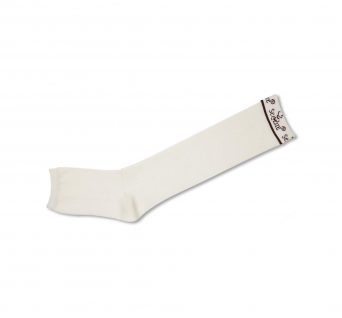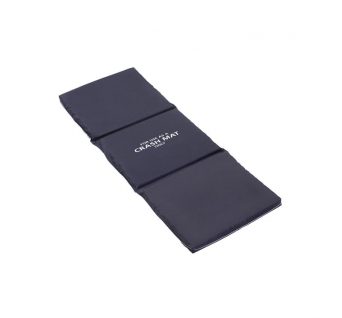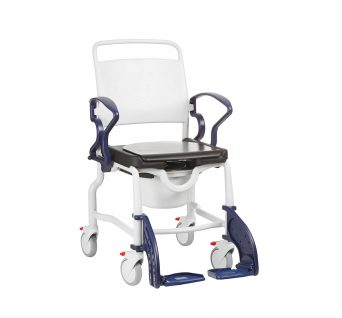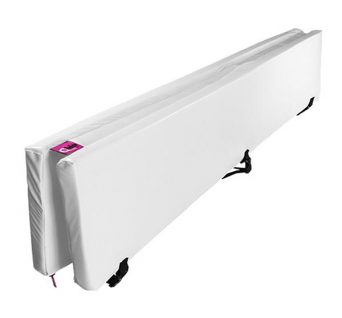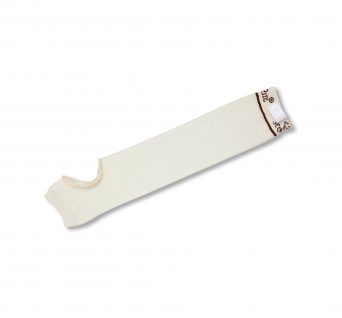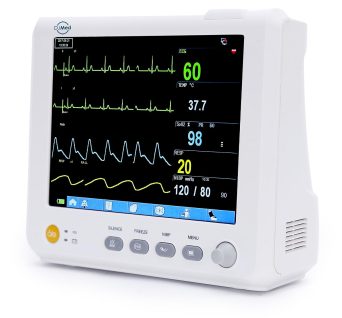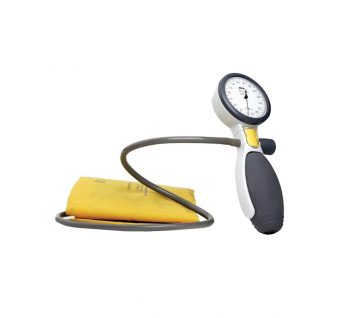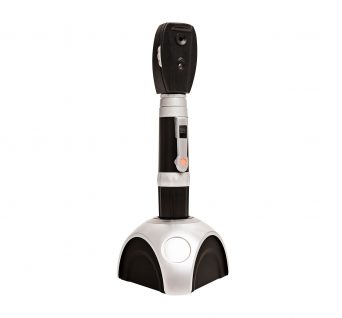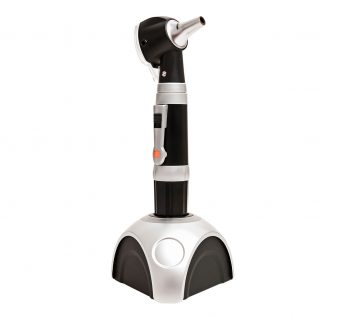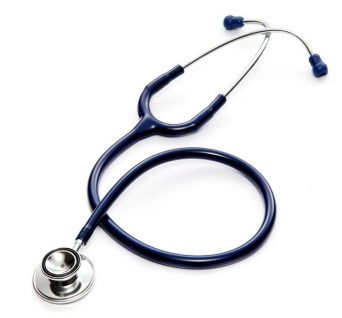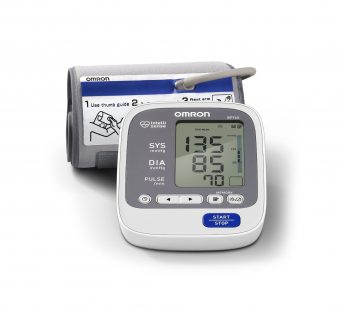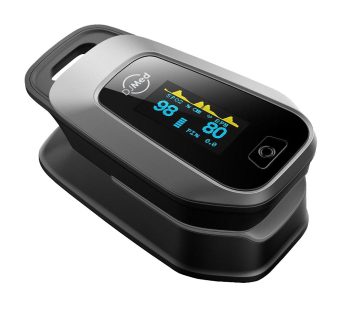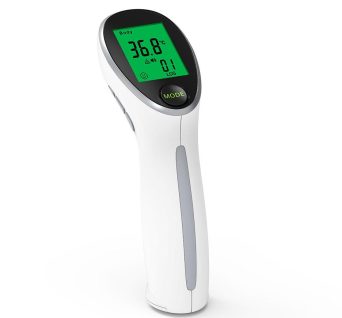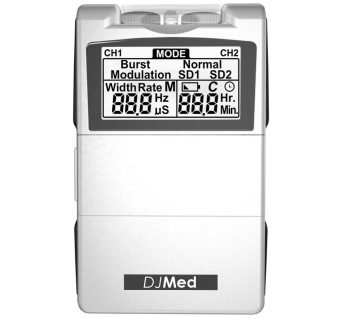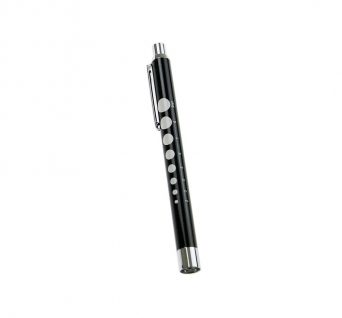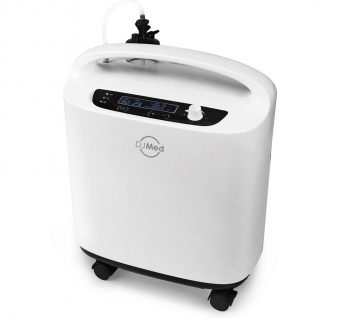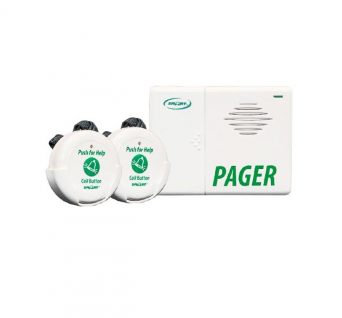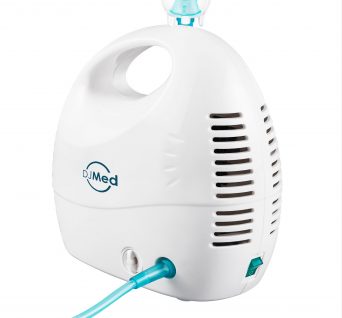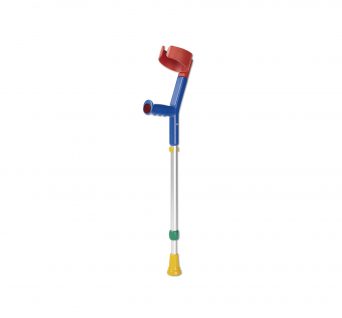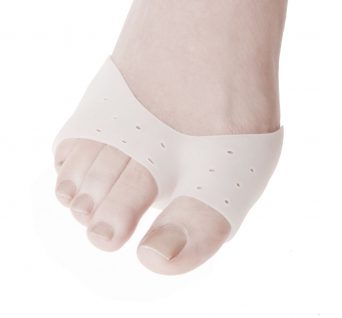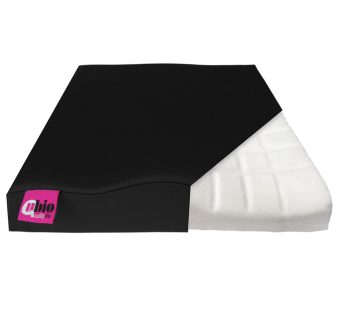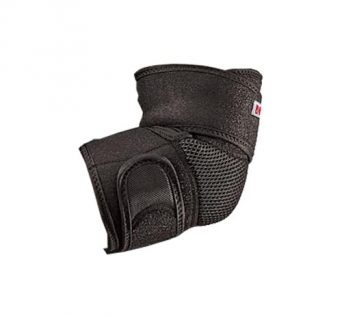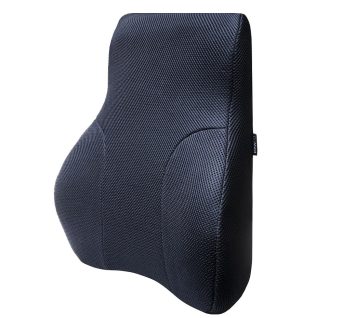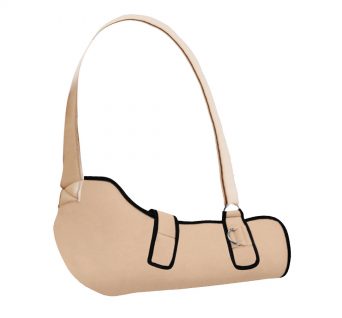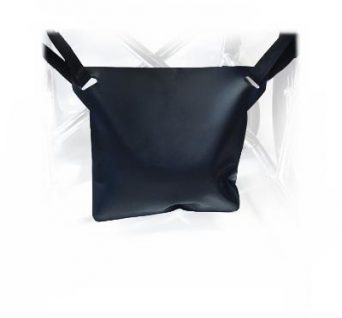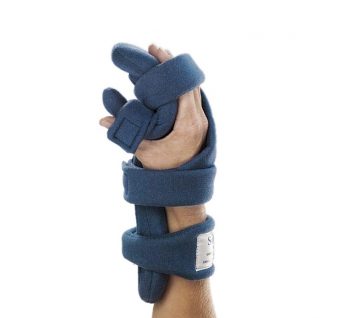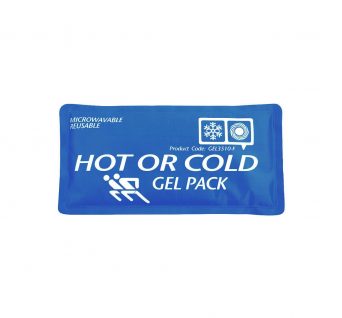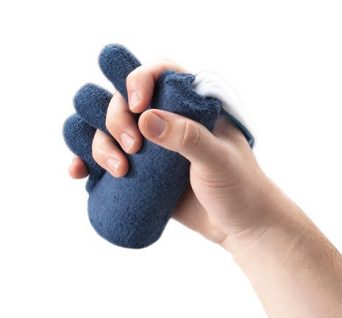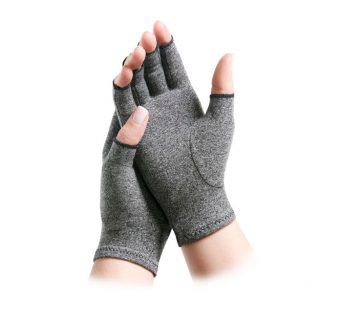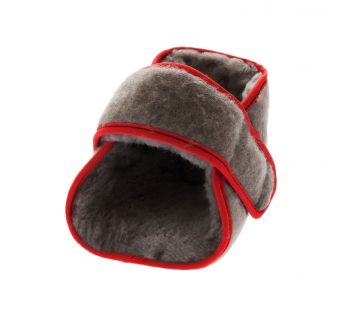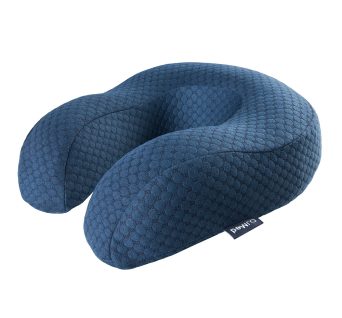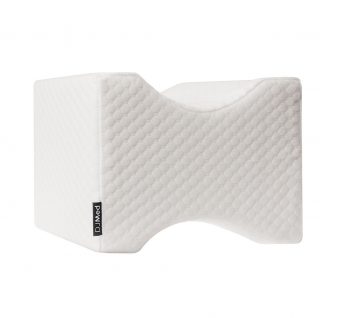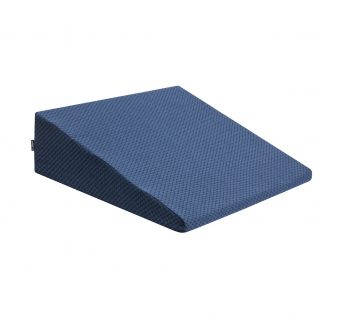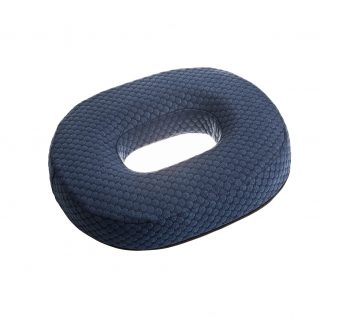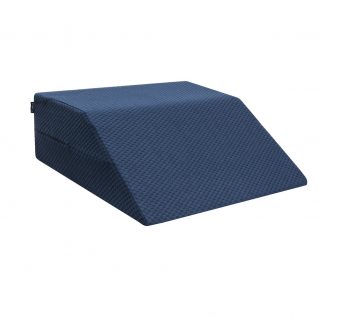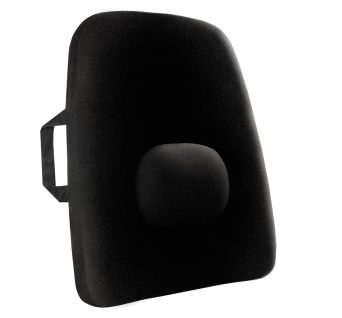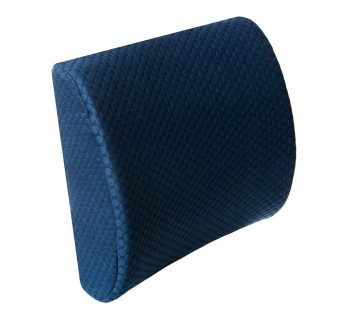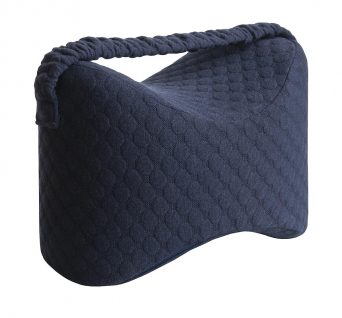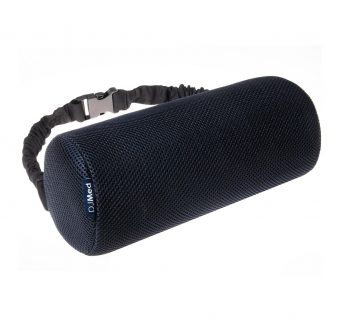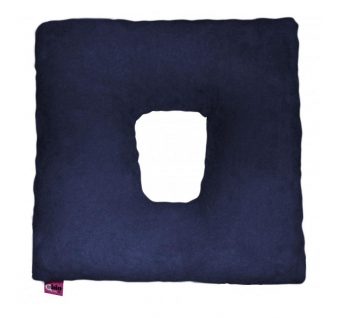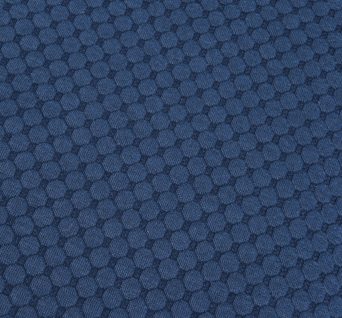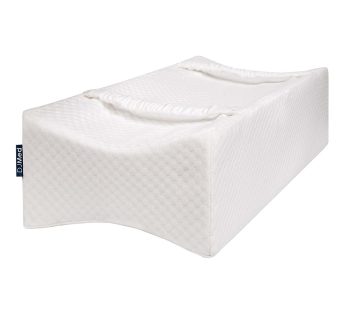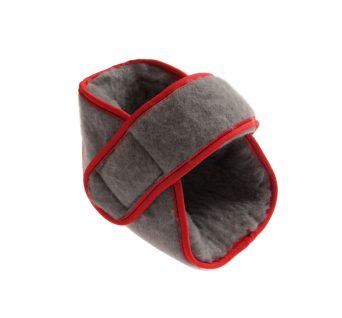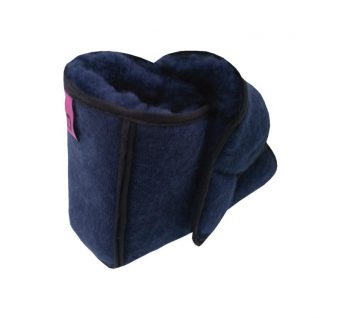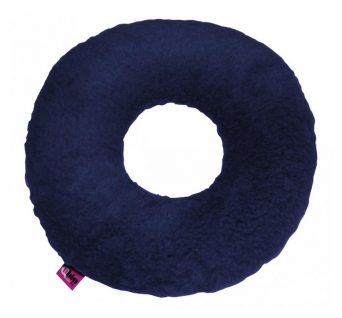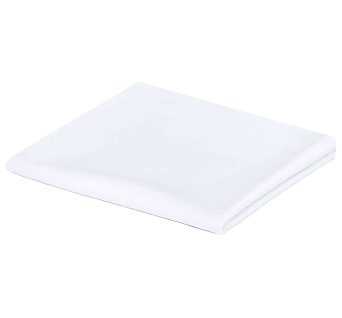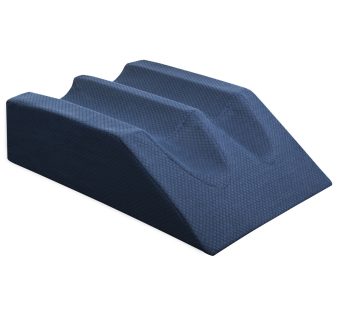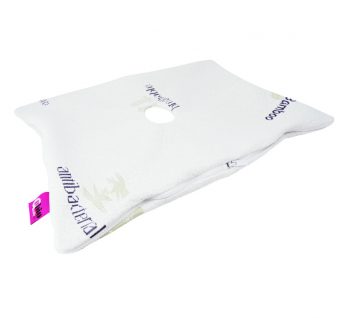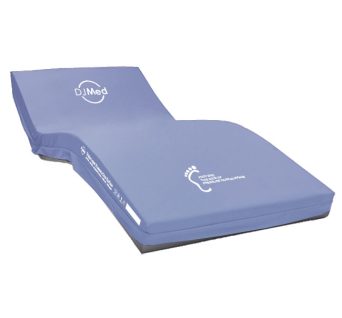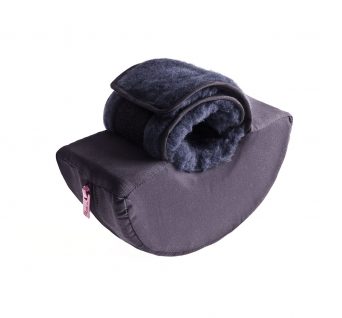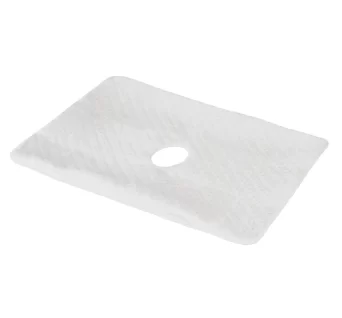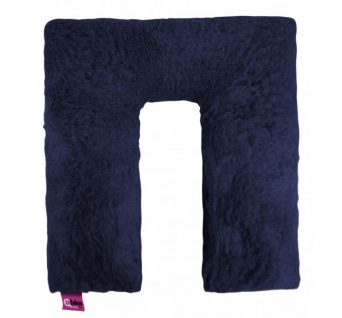No products in the cart.
Pressure Care
Showing 1–30 of 62 resultsSorted by popularity
- Knee & Leg Cushions
DJMed Knee & Leg Pillow
Thicker, wider and a more supportive knee pillow. Perfect for recovery, lower back pain, hip pain and sleep comfort.
- Used for back pain, knee, hip, ankle and joint pains
- Recommended by therapists for post hip replacement or knee surgery
- Great during pregnancy and maternity
DJMed beautifully designed orthopaedic Knee & Leg pillow is made from solid yet soft memory foam that reacts fast to provide lasting relief and comfort.
Memory foam knee and leg pillow is an important tool in caring for people who spend a lot of their time unable to move around easily due to frailty, illness or recovery.
SKU: 306 - Body Positioning Wedges
Body Support Bed Wedge
Multi density layer design memory foam bed wedge for comfort and high density rebound foam for support.
Body support wedge offers first grade memory foam softness combined with supporting and durable high rebounding foam core for even weight distribution.
- Prop yourself up into a comfy sitting position while watching TV or reading a good book.
- Elevate yourself slightly to slip into a relaxed, deep sleep or to have a refreshing afternoon nap.
- Help support your tummy when you are lying on your side when pregnant.
- Help with acid reflux, snoring, allergies, or any other condition which breathing may be impaired in supine position.
SKU: 1005 - Donut Cushions
Oval Foam Donut Coccyx Cushion
Recovery, comfort, pressure relief, unzip and wash cover, does not deflate.
Ideal for after childbirth, haemorrhoid sufferers or lower back pain.
Coccyx oval shaped doughnut cushion with a voided centre. Made with high resilience foam for support that comfortably conforms to your body contours and reduces pressure to the area of discomfort.
SKU: 861 - Body Positioning Wedges
Leg Elevation Wedge
Soft ergonomic wedge pillow to elevate legs, heels and ankles.
Leg Elevation Wedge is designed to promote and improve circulation as well as vascular drainage of the leg area while providing first grade support, softness and gentle pressure distribution to the area.
SKU: n/a - Knee & Leg Cushions
DJMed Knee & Leg Pillow With Leg Strap
Ergonomic, memory foam knee pillow with support leg strap.
Does your back pain keep waking you up at night?
DJMed knee pillow, will give you a more restful night, by allowing you to sleep better. DJMed knee pillow is ergonomically designed to provide ideal spinal alignment and support that helps reduce sciatica, lower back, hip or joint pain.
Improved spinal alignment and posture: By keeping your knees and hips separated while you sleep on your side, the pillow can help to align your spine and pelvis, which may reduce lower back pain.
Reduced pain: The pillow can help to relieve pain in your knees, hips, and joints, especially if you suffer from conditions like arthritis, sciatica, or bursitis.
Better circulation: The space created by the pillow between your knees can improve blood circulation in your legs.
Pregnancy comfort: Pregnant women often find that these pillows help them to sleep more comfortably by supporting their growing belly and reducing pressure on their back.
Keeps the pillow in place: The leg strap helps to ensure that the pillow stays between your knees throughout the night, even if you toss and turn.
SKU: 307 - Donut Cushions
Ubio Square Donut Cushion
Square donut cushion’s voided centre frees the affected area from pressure.
For effective relief and recovery from childbirth, haemorrhoids, fistulas, lower back pain, tailbone injury, and prostate surgery, the doughnut cushion is a great product to use.
Filled with silicone fibre, it has some natural wool features: anti-dust mite, anti-bacterial, anti-fungus, anti-odour, soft, breathable, and washable.
The doughnut is soft and comfortable yet firm enough to prevent compressing under an average weight load. Benefits/Features of Doughnut Cushion
SKU: n/a - Ear Protectors
Ubio Ear Pillow with Ear Hole
Bed pillow with a hole for CNH sufferers, sensitive ears and ear pain.
Ear Pillow offers perfect sleep support with a center hole for the ear, allowing space for healing and preventing pressure.
- Reduce ear pain, pressure sores and CNH (Chondrodermatitis nodularis helicis)
- Helpful aid for healing after ear surgery
- Prevents chafe and pressure sores. Recommended in nursing care settings or for sufferers of frailty
SKU: 116100 - Ear Protectors
Ear Protector with Soft Velcro Strap
Provides effective relief from CNH, pressure sores and chronic ear pain
Ear Protector is designed to help with recovery from ear surgery, ear injuries, ear piercings and conditions like Chondrodermatitis (CNH).
- Softly covers the surrounding area of the ear allowing space for healing and preventing pressure.
- Offers comfort and assists in the prevention of pressure sores that can occur due to nasal cannula usage.
- Prevents chafe and pressure sores while sleeping on bed pillows.
- Widely used in high care nursing settings for sufferers of frailty.
SKU: 106175 - Neck Pillows, Pressure Care
Ergonomic Memory Foam Neck Pillow
Support – Softness – Ergonomic Design – Compact
This beautiful memory foam neck pillow has an ergonomically designed shape to give responsive and gentle comfort.
DearJanes ergonomic neck pillow sits comfortable around your neck and shoulders providing generous support around the three pressure areas while resting your head in any position.
SKU: 354B - Pressure Care
Long Body Pillow, Memory Foam & Bamboo Cover
Bamboo memory foam body pillow, memory foam filling that contours to fit your unique shape, size and sleep position
With a delicate breathable bamboo cover, the fabric is eco-friendly and skin-friendly, which makes the body pillow more durable and comfortable for use.
Machine washable bamboo cover with a concealed zipper. Shredded memory foam filling with moisture-wicking and thermo-regulating properties. Hypoallergenic, antibacterial and dust mite-resistant.
SKU: 1003 - Knee & Leg Cushions
DJMed Full Length Knee & Leg Pillow
Longer, full length knee and leg pillow with two support straps.
It’s long enough to cover from your knees to your ankles, with a strap so that it won’t slip off in the night.
Ergonomically designed knee pillow fits comfortably between your knees with comfort extending along the leg. Helps relieve sciatica pain & lower back pressure.
Reduces back pain for side sleepers. Great for people with arthritis, herniated disc, sciatica and other related conditions.
SKU: 309 - Heel Protectors
Breathable Heel Protectors, Multi-Colour (pair)
Heel pressure ulcer prevention and treatment
Used for treating heel pressure ulcers by reducing pressure on the affected skin. Preventing painful pressure sores and ulcerations to the heel area.
- Breathable, adequate airflow for healing environment
- Soft, comfortable and breathable, perfect for Australian climate
- Light enough to not restrict movement with frail patients
- Range of stylish colour options
SKU: n/a - Heel Protectors
Breathable Heel Protectors (pair)
Soft, breathable medical heel protectors.
Heel Protectors shield the skin on the heels, and provide protection for existing damaged skin.
- Heel ulcer management and prevention
- One size fits most with adjustable Velcro strap
- Breathable, adequate airflow for healing environment
- Machine washable (gentle cycle)
SKU: n/a - Compression
Soft Compression Arthritis Gloves
Soft Compression Arthritis Gloves – Promotes Healing And Reduces Pain
Soft Compression Arthritis Gloves help deal with the common symptoms of arthritis such as cramps, stiffness and pains. With the increased circulation and warmth that the gloves provides, healing is promoted while pain is reduced.
SKU: 6763 - Donut Cushions
Ubio Round Donut Cushion
The donut cushion is designed with a round void center that suspends the affected area from painful pressure.
- For relief of discomfort associated with tailbone, coccyx, post childbirth and lower back pain.
- Round Donut Cushion is thick fluffy for the experience of high softness comfort seating.
- Round shape is suited for a variety of sized wheelchairs as well as other types of seating.
SKU: n/a - Pressure Care
Pillow Cover Slip for Body Pillow
Polycotton body pillow cover, soft, breathable, white colour.
Soft polycotton is spun into a soft & durable fabric crafted into bedding that you can’t help but love.
It’s long-lasting & effortlessly cozy. We inculcate an eco-conscious & farmer-sensitive approach in our processes too. Bring home leisure that lasts all year round.
SKU: 1002 - Ear Protectors
DJMed Ear Pillow with Ear Hole
Comfortable memory foam and natural bamboo fabric with pressure relieving ear center void
Tired of traditional pillows that put pressure on your ears and cause discomfort as you try to sleep? Experience the comfort and relaxation with our Memory Foam Ear Pillow, thoughtfully designed with your well-being in mind. Say goodbye to discomfort and hello to a soothing night’s sleep with our innovative Ear Hole feature.
Crafted from ultra-plush memory foam, our pillow cradles your head in gentle, body-contouring support. The memory foam fills in around your ear without contact, allowing you to enjoy personalized comfort and relief from ear numbness or irritation. An ergonomic hollow in our clever design leaves your ear free from contact or compression, enabling you to find the perfect sleeping position with ease.
Don’t settle for tossing and turning due to uncomfortable pillow pressure. This innovative Ear Pillow is carefully engineered to pamper your head and ears all night long. Order now and get the rejuvenating sleep you deserve! Purchase yours today.
SKU: 1150 - Body Positioning Wedges
Double Leg Elevator Positioning Wedge
Contoured twin channel for resting and elevating an injured leg, memory foam, removable cover.
The key to fast recovery is immobilizing the injured joints and bones and elevating them above your heart level to reduce blood pooling. With its contoured twin channels, this Double Leg Elevator Positioning Wedge has been developed to relieve swelling in a fast and easy way.
The memory foam cushions are incredibly soft and comfortable. Our convenient removable cover makes it easy to clean and keep fresh. Perfect for: leg casts, varicose veins, pregnancy, post-trauma & medical procedures, knee & leg injuries and ACL injuries.
SKU: 1011 - Hospital Mattress
Hospital Mattress, Triple Layer, Single
Multi density viscoelastic foam. Welded waterproof fabric cover. Fire-retardant inner and outer cover.
Triple layer mattress is a multi-density foam static pressure care surface for hospital, aged care facility and home use.
Triple Layer Mattress hugs the contours of the user’s body, providing maximum support and comfort to patients with poor mobility and reducing the risk of pressure sores.
SKU: 1030 - Heel Elevator
Heel Elevation Cushion with Round Base
Round base heel elevation cushion block.
Suitable for patients suffering from existing heel wounds creating elevated healing environment.
- Round base for improved position flexibility
- Complete heel suspension
- Ultra soft strap with Velcro
- Removable, washable cover
SKU: 109102 - Ear Protectors
Removable Cover for DJMed Ear Pillow with an Ear Hole
Soft and natural bamboo blend, premium Japanese YKK zipper, to fit SKU 1050.
Tired of your ear pillow getting dirty and worn out? Introducing the Removable Cover for DJMed Ear Pillow with an Ear Hole!
This removable cover slips easily over your DJMed ear pillow, protecting it from dirt, oils, and damage. The soft, breathable fabric keeps your ear pillow fresh while still allowing total comfort and auditory access thanks to the ear hole in the cover.
Whether you use your DJMed ear pillow for travel, side sleeping, or recovery from surgery, this removable cover will extend its lifetime significantly. Machine washable and durable, each high-quality cover can be swapped out and cleaned without having to replace your entire ear pillow.
Stay comfortable and save money at the same time. This removable cover pays for itself by letting you use your ear pillow longer. And with its perfect fit and soft feel, you’ll barely notice it’s on!
Keep your ear pillow like new with the Removable Cover for DJMed Ear Pillow with an Ear Hole. Order now and refresh your ear pillow affordably.
SKU: 1155 - Seat & Chair Cushions
Ubio Square Horseshoe Cushion
Relieves discomfort associated with tailbone, coccyx and lower back pain.
- Unique horseshoe cut-out suspends affected area from painful pressure.
- Soft silicone fibre filling is breathable, antibacterial and washable.
- Alleviates the discomfort associated with sitting for longer periods.
SKU: n/a - Ear Protectors, Home Care, Pressure Care
Face Down Pillow, Post Ocular Surgery Recovery
Face down pillow perfect for after eye surgery to offload ocular pressure during recovery.
Post laser eye surgery recovery facedown pillow is suitable for reduction of ocular pressure when lying face down.
Ideal after a postoperative retinal detachment, myopia, cataracts or strabismus. This pillow reduces contact with the eye and surrounding area on to surfaces, relieving pressure to the area.
SKU: 116150
Bathroom, Bath, Shower & Toilet
Pressure Ulcers affect up to 20% of patients in Nursing and Residential Care. Pressure care management offers a range of products to reduce pressure sore development as well as helping the healing process. We stock a great range of targeted cushioning, recovery and pressure sore prevention products such as leg cushions, heel protectors and wheelchair cushions.
Pressure care, also known as pressure ulcer prevention or pressure sore management, is a critical aspect of healthcare, particularly in medical environments such as hospitals, nursing homes, and home healthcare settings. Pressure care involves a range of strategies and interventions designed to prevent and manage pressure ulcers, which are also known as pressure sores or bedsores.
Pressure ulcers are localized injuries to the skin and underlying tissue, primarily caused by prolonged pressure or friction on specific areas of the body. These areas are often bony prominences where the skin and underlying tissue can become damaged due to reduced blood flow and oxygen supply. Pressure ulcers can range from mild reddening of the skin (Stage 1) to deep wounds affecting muscle and bone (Stage 4).
Key aspects of pressure care in a medical environment include:
Assessment and Risk Assessment: Healthcare professionals assess patients to identify individuals at risk of developing pressure ulcers. Risk factors include immobility, reduced sensation, poor nutrition, and incontinence. Various risk assessment scales help healthcare providers determine a patient's risk level.
Repositioning and Turning: Patients who are immobile or bedridden are repositioned regularly to relieve pressure on vulnerable areas. The frequency and method of turning or repositioning depend on the patient's risk level and medical condition.
Support Surfaces: Specialized support surfaces, such as pressure-relieving mattresses and cushions, can help distribute pressure more evenly, reducing the risk of pressure ulcers.
Skin Care: Proper skin care, including keeping the skin clean and moisturized, is essential. Patients at risk of pressure ulcers should have their skin inspected regularly for signs of damage.
Nutrition and Hydration: Adequate nutrition and hydration play a vital role in maintaining healthy skin. Malnourished or dehydrated patients are at higher risk of developing pressure ulcers.
Education: Patients and caregivers should receive education on pressure ulcer prevention and early detection. This includes recognizing warning signs, such as redness, warmth, or changes in skin texture.
Incontinence Management: Proper management of urinary and fecal incontinence is crucial, as prolonged exposure to moisture can contribute to pressure ulcer development.
Medical Interventions: In some cases, advanced pressure ulcers may require medical interventions, including wound cleaning, debridement (removal of dead tissue), infection control, and, in severe cases, surgical procedures.
Mobility and Rehabilitation: Encouraging and facilitating mobility and rehabilitation for patients who are capable of movement is important for maintaining skin health and preventing pressure ulcers.
Pressure care is a collaborative effort involving nurses, doctors, physical therapists, occupational therapists, dietitians, and other healthcare professionals. It aims to prevent the development of pressure ulcers in at-risk patients and provide appropriate care and treatment for those who already have pressure ulcers to promote healing and prevent complications.
The goal of pressure care is to enhance patient comfort, maintain skin integrity, and improve overall quality of life for individuals receiving medical care, particularly those who are immobile or have limited mobility.
How do you care for the pressure area of a patient?
Caring for the pressure area of a patient, especially if they have or are at risk of developing pressure ulcers (also known as pressure sores or bedsores), involves a systematic approach to prevent skin breakdown and promote healing. Here are the key steps in caring for a patient's pressure area:
Assessment: Conduct a thorough assessment of the patient's skin, paying close attention to areas at risk of pressure ulcers, such as the heels, sacrum (lower back), hips, elbows, and shoulders. Use a validated pressure ulcer risk assessment scale to determine the patient's risk level. Document the patient's skin condition, including any existing pressure ulcers, skin changes (e.g., redness, blisters, discoloration), and moisture-related issues (e.g., incontinence).
Repositioning and Turning: For bedridden or immobile patients, develop a turning and repositioning schedule based on their risk level and individual needs. This may involve turning the patient every 2 to 4 hours. Use proper lifting and positioning techniques to avoid friction and shear forces during transfers and repositioning. Elevate the heels slightly off the bed or use heel protectors to reduce pressure on this vulnerable area.
Support Surfaces: Ensure the patient is on an appropriate support surface, such as a pressure-relieving mattress or cushion. These surfaces distribute pressure more evenly and reduce the risk of pressure ulcers. Adjust the support surface based on the patient's condition and risk factors.
Skin Care: Keep the skin clean and dry. Use mild, pH-balanced cleansers and pat the skin gently to avoid friction. Apply moisturizing creams or barrier creams to maintain skin hydration and integrity. Avoid using hot water, harsh soaps, and vigorous scrubbing, as these can damage the skin.
Nutrition and Hydration: Ensure the patient receives adequate nutrition and hydration to support skin health and tissue repair. Consult a registered dietitian if malnutrition is a concern.
Pressure Redistribution Devices: Utilize pressure redistribution devices like heel protectors, elbow protectors, and donut cushions, as appropriate, to reduce pressure on specific areas.
Incontinence Management: Implement a comprehensive incontinence management plan, including the use of absorbent products, regular changes, and skin protection. Use moisture-barrier creams or ointments to protect the skin from the harmful effects of moisture.
Education: Educate the patient and their caregivers about the importance of pressure ulcer prevention, skin care, and early detection. Teach them to recognize signs of pressure ulcers and report any changes promptly.
Monitoring and Documentation: Regularly assess and document the patient's skin condition, any changes, and the effectiveness of prevention measures. Document interventions and outcomes in the patient's medical record.
Medical Interventions: If pressure ulcers develop, follow the healthcare facility's protocols for wound care, which may include wound cleaning, debridement, infection control, and the use of appropriate dressings. Consult wound care specialists or healthcare professionals as needed for advanced wound management.
Mobility and Rehabilitation: Encourage and facilitate mobility and rehabilitation for patients who are capable of movement. Activity promotes circulation and helps prevent pressure ulcers.
Pain Management: Provide pain relief as necessary, as pressure ulcers can be painful. Addressing pain can improve the patient's comfort and overall well-being.
Caring for a patient's pressure area is a collaborative effort involving healthcare providers, nursing staff, physical therapists, occupational therapists, and dietitians. Regular communication and teamwork are essential to effectively prevent and manage pressure ulcers and ensure the patient's optimal comfort and recovery.
